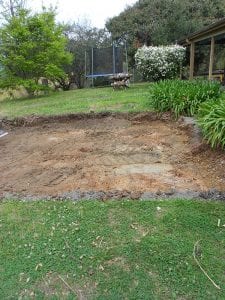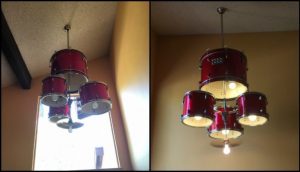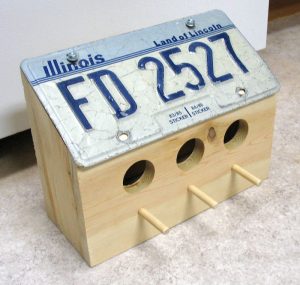Last Updated on February 22, 2024 by teamobn
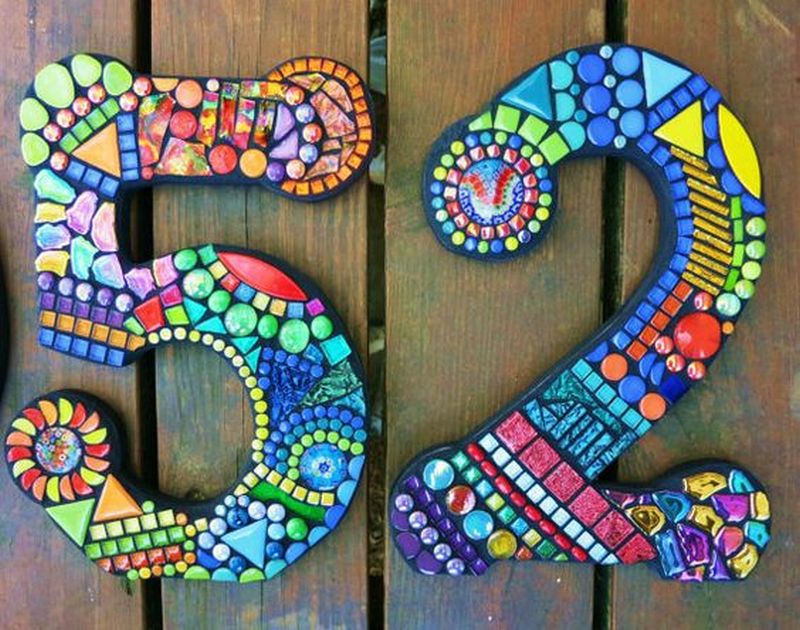
The logic behind housing numbers is that they facilitate the quick location of places. This is especially necessary for large urban cities, where it helps to have a house number displayed outside your home. It is useful to a lot of people.
Your friends won’t have a hard time looking for your home. On the other hand, emergency services will also be able to locate your home much faster in the event of an emergency. Having a housing number is thus a very practical solution that benefits everyone.
In addition to making it easier to locate a specific address, housing numbers also help to identify a property. This can be helpful in the event of an issue with the property. Having a unique number for each home makes it easier for authorities to keep track of properties and their residents. This can help to ensure that everyone in the community is safe and that any problems with a specific property can be quickly addressed.
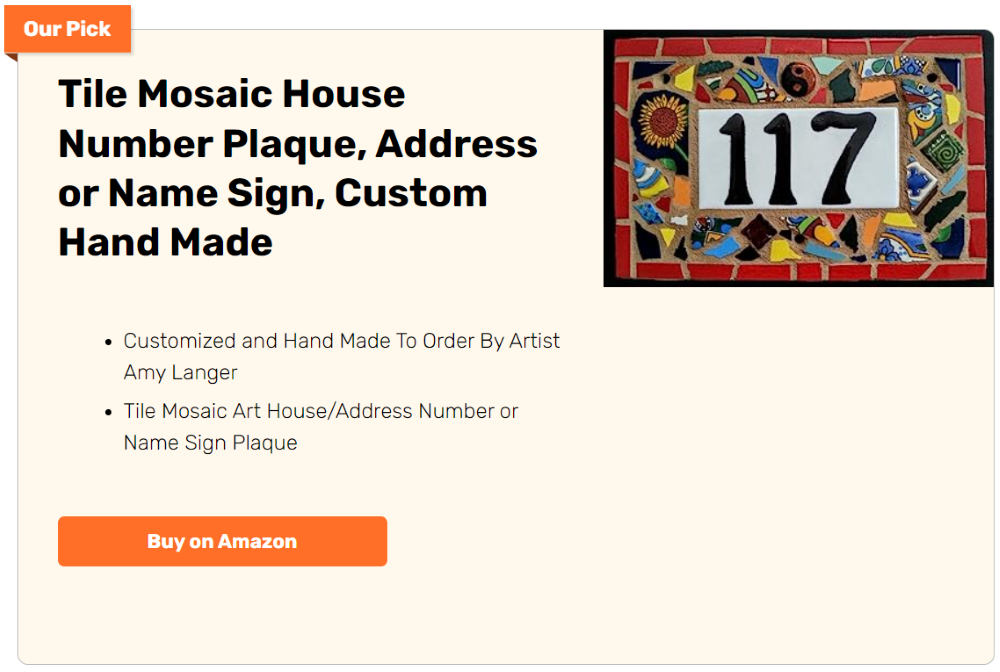
However, we’re so done with those dull house numbers. They are so last season. Do you know what the new trend is nowadays? Mosaic house numbers! Mosaic house numbers are becoming increasingly popular as homeowners look for ways to add personality and style to their homes.
While traditional house numbers may be dull, mosaic numbers can add a touch of elegance and class to any home. Mosaic house numbers combine small pieces of glass, tile, or stone to create a unique and customized design. This type of numbering can be used to create a variety of looks, from classic and timeless to modern and contemporary.
Since ancient times, mosaics have dazzled and intrigued people with their colours and distinctive aesthetic. Often made of meticulously arranged coloured tiles, mosaics offer an eye-catching approach to art and decoration.
Contents [show]
The Versatility of Mosaic Art
Mosaic art, an ancient yet ever-evolving form of artistic expression, continues to enchant and inspire with its versatility and timeless appeal. Originating thousands of years ago, mosaic art has transcended civilizations and cultures, leaving its mark on architectural marvels, religious sanctuaries, and public spaces worldwide. This introduction delves into the fascinating world of mosaic art, exploring its rich history, diverse techniques, and limitless possibilities.
The roots of mosaic art stretch back to antiquity, with evidence dating back to the third millennium BCE in Mesopotamia and ancient Egypt. Initially, artisans utilized materials such as pebbles, shells, and clay to create rudimentary designs. However, it was the Greeks who refined the craft, introducing the use of tesserae—small, uniform pieces of stone or glass—to produce intricate patterns and pictorial compositions.
The pinnacle of mosaic artistry arrived with the rise of the Roman Empire. Romans adorned their homes, baths, and temples with elaborate mosaic floors and walls, depicting scenes from mythology, daily life, and nature. These stunning mosaics served not only as decorative elements but also as a testament to the wealth, power, and cultural sophistication of the empire.
One of the most remarkable qualities of mosaic art is its remarkable versatility. Unlike other artistic mediums, mosaics can adorn virtually any surface, from floors and walls to ceilings and domes. This adaptability has led to the widespread use of mosaic art in a myriad of contexts, ranging from religious structures and palaces to public squares and contemporary urban landscapes.
Moreover, mosaic art transcends stylistic boundaries, accommodating a diverse range of artistic expressions and aesthetic preferences. Whether it’s the geometric precision of Byzantine mosaics, the intricate detail of Islamic tile work, or the abstract compositions of modern mosaics, this art form encompasses a boundless spectrum of styles and techniques.
Beyond its decorative function, mosaic art possesses inherent practical advantages. Its durable nature makes it resistant to wear, weather, and fading, ensuring longevity even in the most exposed environments. Additionally, the tactile quality of mosaics adds texture and dimension to architectural surfaces, creating immersive sensory experiences for viewers.
Furthermore, mosaic art offers endless possibilities for customization and personalization. Artists and designers can manipulate colour, texture, and composition to evoke specific moods, themes, or narratives, making each mosaic installation a unique and deeply meaningful creation.
Mosaic art stands as a testament to humanity’s creative spirit and ingenuity. Its ancient origins and enduring popularity attest to its timeless allure and relevance in contemporary society. From humble beginnings to magnificent masterpieces, mosaic art continues to captivate and inspire, inviting us to explore its rich history, embrace its limitless possibilities, and marvel at its enduring beauty.
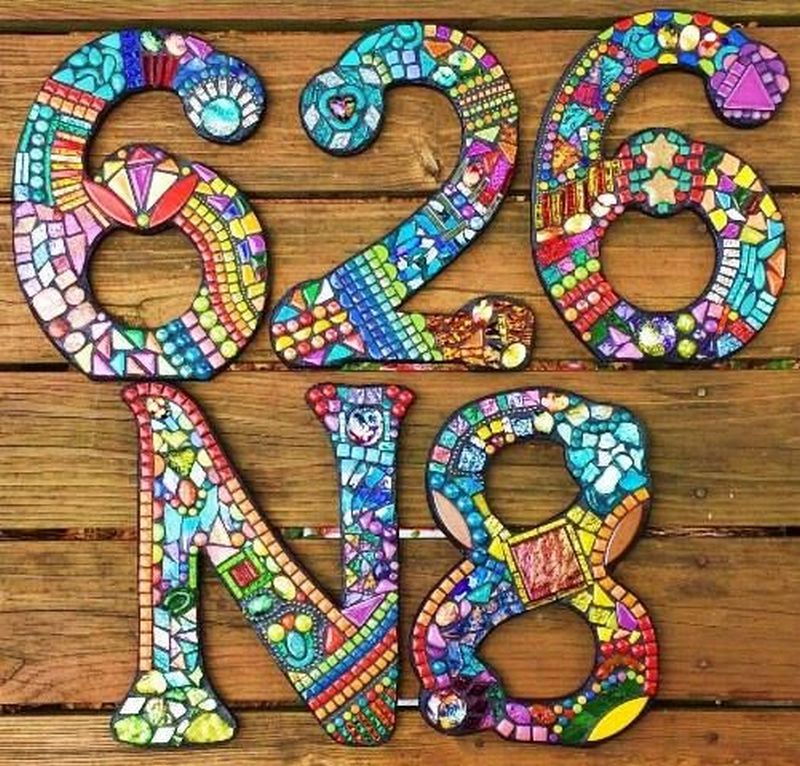
Mosaic house numbers are a fun and unique way to add a personal touch to your home. By combining different colours and patterns, you can create a one-of-a-kind look that will make your house stand out from the rest.
Not only are mosaic numbers a great way to express your personality, but they are also highly visible, making it easier for visitors and delivery drivers to find your home. And because they are made from durable materials, mosaic numbers will last for years to come.
And the best part is, you can easily do it yourself! With just a few supplies and a bit of time, you can create a beautiful mosaic house number that’s ready to install. Not only will your handiwork add curb appeal to your home, but you can also give mosaic house numbers as gifts to family and friends. Imagine their delight at receiving a one-of-a-kind work of art that they can proudly display outside their home.
Choosing Tiles for Mosaic Art
Selecting tiles for mosaic art is a crucial step that can greatly influence the outcome of your piece. Here are some considerations to keep in mind when choosing tiles:
1. Material: Tiles come in various materials, each with its own characteristics and aesthetic appeal. Common options include glass, ceramic, porcelain, stone, and metal. Glass tiles offer vibrant colours and transparency, while ceramic and porcelain tiles provide durability and versatility. Stone tiles, such as marble or travertine, add a natural elegance to mosaics, while metal tiles introduce texture and sheen.
2. Color: The colour palette you choose will set the mood and tone of your mosaic. Consider the overall theme or message you want to convey and select tiles that complement or contrast with each other harmoniously. Experiment with different shades, hues, and finishes to achieve the desired effect. Keep in mind that certain materials, like glass, may offer a wider range of colours than others.
3. Texture: Texture can add depth and visual interest to your mosaic art. Choose tiles with varying textures and finishes, such as glossy, matte, or textured surfaces, to create dimension and tactile appeal. Mixing different textures can enhance the overall composition and create dynamic effects when viewed from different angles.
4. Size and Shape: Tiles come in a variety of sizes and shapes, from small squares and rectangles to irregular shapes and mosaic tiles specifically designed for this purpose. Consider the scale of your design and the level of detail you want to achieve when selecting tile sizes. Smaller tiles allow for intricate designs and fine details, while larger tiles may be better suited for bold, graphic compositions.
5. Ease of Cutting and Installation: Depending on your design requirements, you may need to cut tiles to fit specific areas or shapes. Choose tiles that are easy to cut and manipulate, especially if you’re working on intricate designs or curved surfaces. Additionally, consider the ease of installation and whether the tiles can be applied using adhesive or mortar, depending on the substrate and application method.
6. Longevity and Maintenance: Consider the durability and maintenance requirements of the tiles, especially if your mosaic will be installed in a high-traffic or outdoor environment. Ensure that the tiles are suitable for the intended use and can withstand exposure to moisture, temperature fluctuations, and other environmental factors. Choose materials that are easy to clean and maintain to preserve the beauty of your mosaic art for years to come.
By considering these factors and experimenting with different combinations, you can create a stunning mosaic art piece that reflects your unique vision and style. Don’t be afraid to mix and match tiles to achieve the desired aesthetic impact and bring your creative vision to life.
How to Make Mosaic House Numbers
Materials:
- Wooden or MDF numbers
- Black primer spray paint
- Picture hangers
- Mini tiles, assorted sizes
- Keys
- Heart charms
- Lock charms
- Brass shank buttons (shanks removed)
- 4mm cube beads
- 100% silicone, black
Tools:
- Putty knife
Click on any image to start the lightbox display. Use your Esc key to close the lightbox.
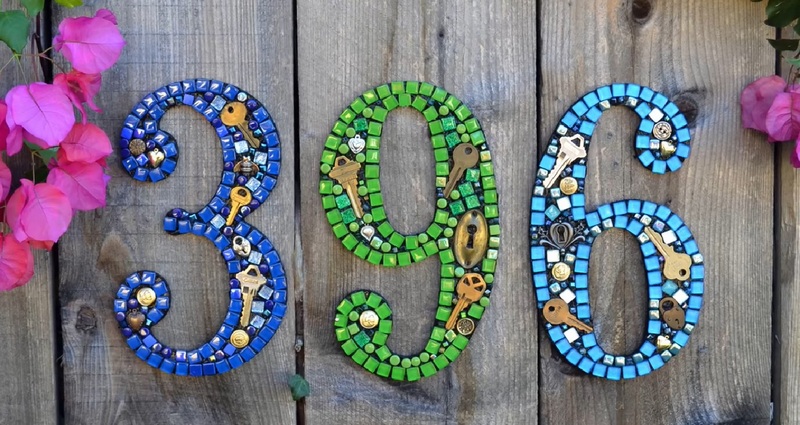
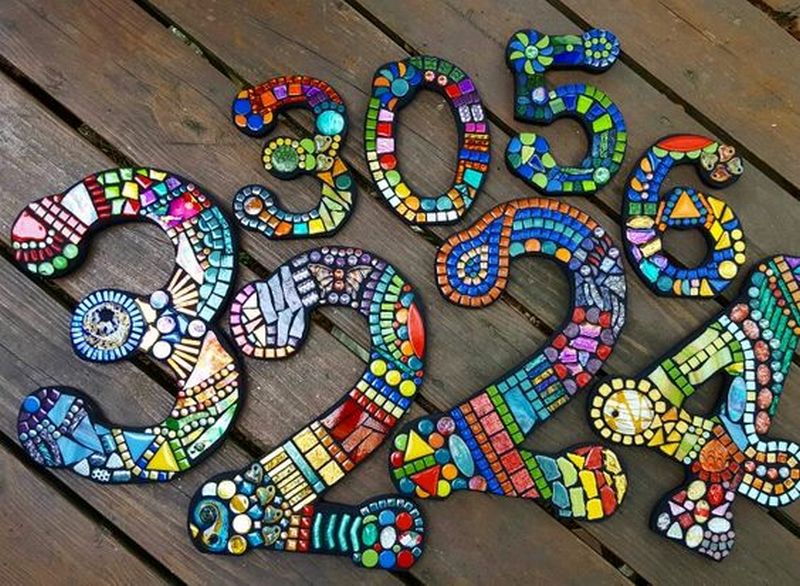
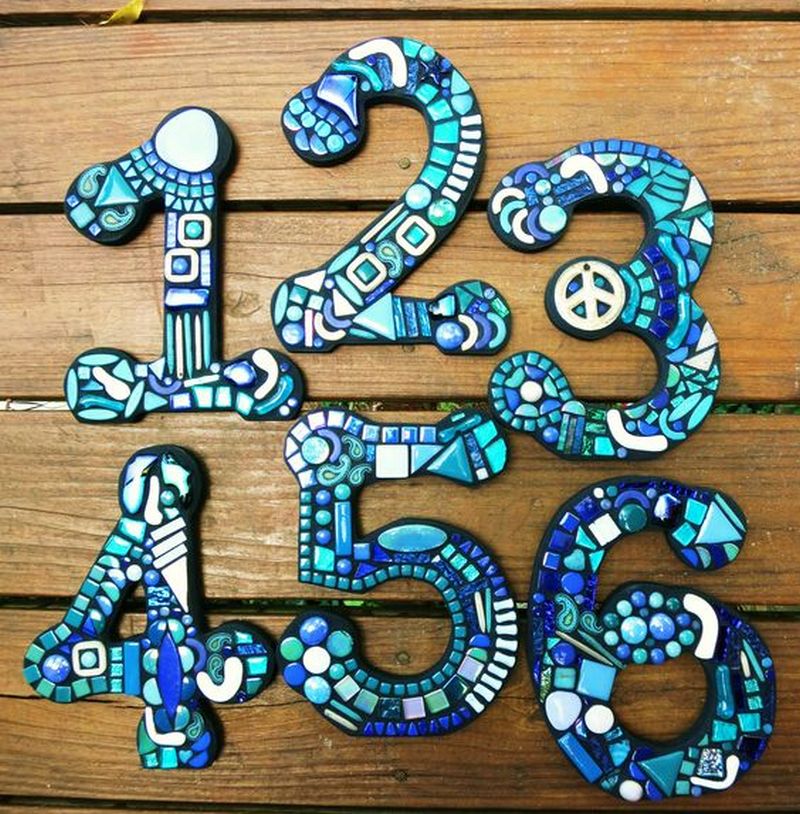
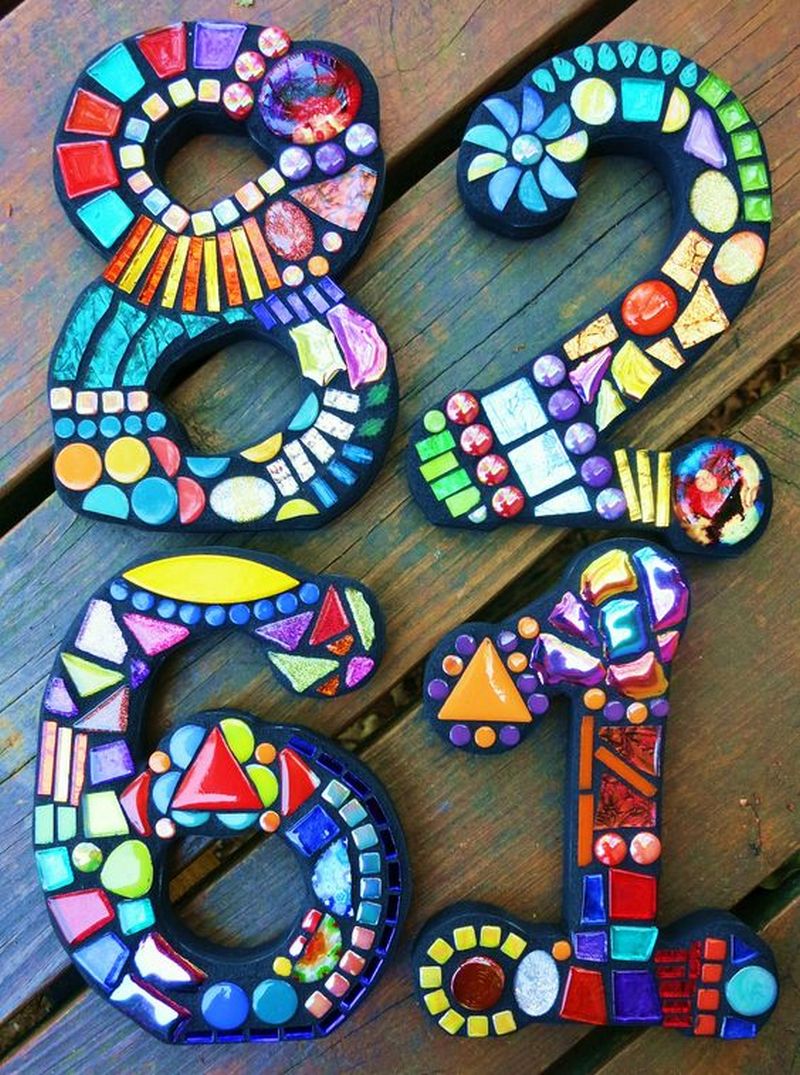
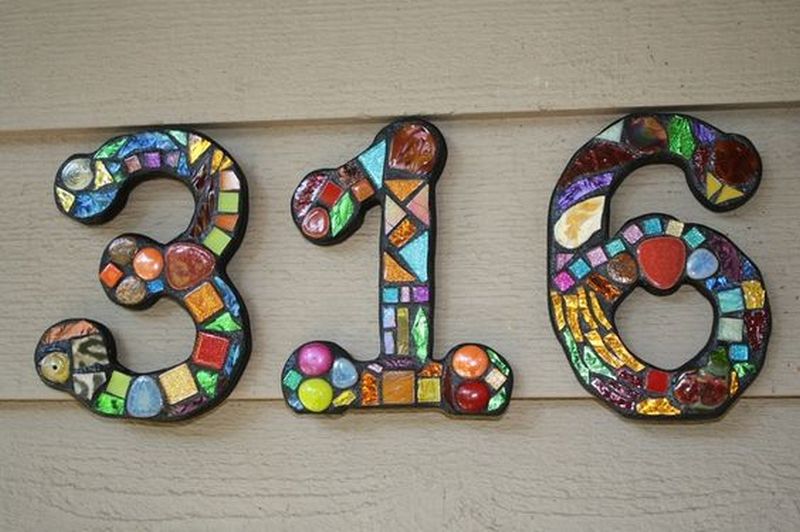
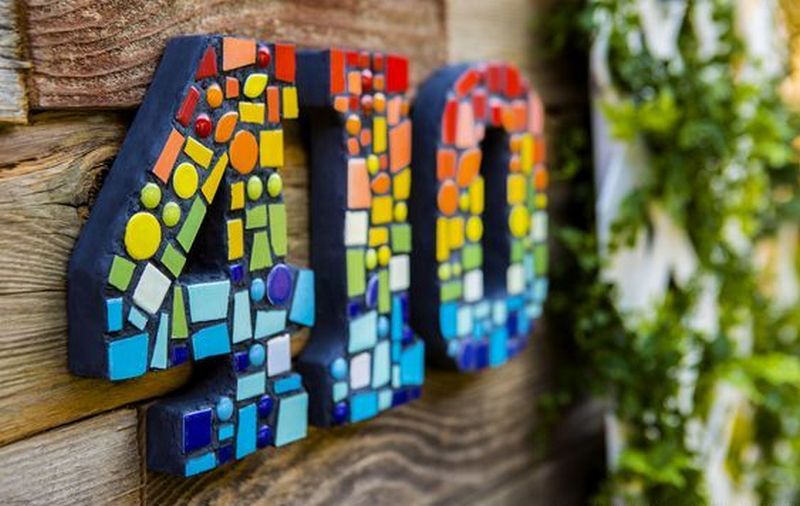
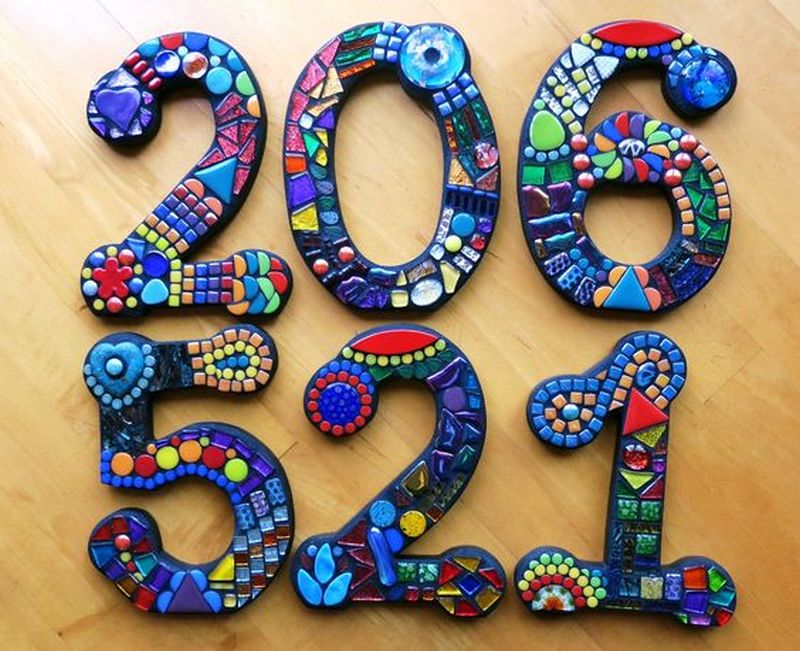


If you’re interested in making mosaic house numbers, you can check out the video tutorial below to guide you. This project is a great way to add a personal touch to your home while also getting to practice your mosaic-making skills.
You can get step-by-step instructions here…
The Wrap Up
Creating DIY mosaic house numbers offers a fantastic opportunity to infuse your home with personalized charm and creativity. By utilizing simple materials and following straightforward techniques, you can craft stunning designs that not only enhance the curb appeal of your residence but also reflect your unique style and personality.
Throughout this guide, we’ve explored how common materials like tiles, adhesive, grout, and sturdy backing can be transformed into eye-catching mosaic compositions. Whether you opt for a sleek, modern design or a whimsical, eclectic arrangement, the possibilities are endless.
Furthermore, the process of crafting mosaic house numbers is not only enjoyable but also immensely rewarding. It allows you to engage in a hands-on creative endeavour that can be tailored to suit your skill level and preferences. Whether you’re a seasoned crafter or a novice enthusiast, the step-by-step instructions provided here empower you to embark on this DIY project with confidence.
Moreover, the versatility of mosaic art ensures that your house numbers will stand out as unique focal points, adding character and distinction to your home’s exterior. Whether you choose to display them on a plaque, stone slab, or any other suitable surface, your mosaic house numbers are sure to make a lasting impression on visitors and passersby alike.
In essence, by embracing the simplicity and creativity of DIY mosaic house numbers, you not only enhance the aesthetic appeal of your home but also imbue it with a touch of handmade craftsmanship and individuality. So why wait? Gather your materials, unleash your imagination, and embark on a journey to create stunning mosaic designs that will adorn your home with beauty and charm for years to come!
Frequently Asked Questions
1. What materials do I need to create mosaic house numbers?
The basic materials include wooden or MDF numbers, black primer spray paint, picture hangers, mini tiles, assorted sizes, keys, heart charms, lock charms, brass shank buttons (shanks removed), 4mm cube beads, and 100% silicone, black.
2. Can you use any type of tiles for your mosaic house numbers?
Yes, you can choose from a variety of tiles such as ceramic, glass, stone, or even repurposed broken tiles. Just ensure they are suitable for outdoor use if your mosaic house numbers will be displayed outdoors.
Repurposing broken or leftover tiles from previous projects is a sustainable and creative option for your mosaic house numbers. By salvaging discarded tiles or repurposing ones that would otherwise go to waste, you can give them new life in your mosaic design.
Embrace the imperfections and irregular shapes of repurposed tiles to create a unique and eclectic look that adds character and charm to your home’s exterior.
3. Do you need artistic skills to create mosaic house numbers?
No artistic skills are necessary. The process involves arranging tiles on a backing board, and the simplicity can be tailored to your skill level. Templates and stencils can also be helpful.
Repurposing broken or leftover tiles from previous projects is a creative and eco-friendly option for your mosaic house numbers. By salvaging discarded tiles or repurposing ones that would otherwise go to waste, you can create a unique and personalized mosaic design. Embrace the imperfections and irregular shapes of repurposed tiles to add character and charm to your mosaic. Just ensure they are sealed properly to protect them from moisture and weather damage.
4. Can you personalize the design of your mosaic house numbers?
Absolutely! DIY mosaic house numbers are an excellent way to express your creativity. You can choose colours, patterns, and styles that suit your taste and match your home’s aesthetic. Your home is a reflection of your style and taste, and your house numbers should be no exception. With DIY mosaic house numbers, you have the freedom to customize every aspect of the design to suit your preferences.
Whether you’re drawn to geometric shapes, floral motifs, or abstract designs, you can create house numbers that resonate with you and make a statement on your home’s facade. Mosaic art offers endless possibilities in terms of design and materials. You can choose from a variety of tile types, including ceramic, glass, stone, and more, to achieve the desired look.
Additionally, you can experiment with different patterns, shapes, and textures to create a mosaic that is as unique as you are.
5. How do you ensure the mosaic house numbers are weather-resistant?
Outdoor environments subject mosaic artworks to various weather conditions, including rain, sunlight, and temperature fluctuations. Without proper protection, the tiles and grout can deteriorate over time, leading to discolouration, cracking, or loosening of the tiles. Sealing creates a protective barrier that shields the mosaic from moisture, UV rays, and other environmental factors, extending its lifespan and maintaining its aesthetic appeal.
Sealing the mosaic helps preserve the vibrancy of colours and the texture of the tiles, ensuring that your artwork remains visually appealing for years to come. It prevents fading, staining, and surface damage caused by exposure to sunlight, water, and pollutants, allowing the mosaic to retain its original beauty and clarity over time.
6. Can you install mosaic house numbers indoors?
Yes, you can. Mosaic house numbers can be a unique and artistic addition to your interior decor. Just ensure the materials used are appropriate for indoor applications.
7. Is it possible to remove or replace mosaic house numbers later?
While it may be challenging to remove the mosaic once it’s set in grout, it is possible with proper tools and care. Consider this when choosing the location for installation.
8. How long does it take to complete a mosaic house number project?
The time required depends on the complexity of your design and the drying time of adhesive and grout. Generally, it can take a day or two, allowing for drying and setting times.
9. Can you mosaic other items besides house numbers using the same materials and techniques?
Certainly! The materials and techniques used for mosaic house numbers can be applied to various DIY projects, such as tabletops, stepping stones, or decorative plaques.
10. Where can I find inspiration for my mosaic house number design?
You can find inspiration online, in home improvement stores, or by exploring mosaic art in various forms. Pinterest, craft blogs, and DIY websites are great places to start.
These FAQs provide a helpful guide for individuals looking to embark on a DIY mosaic house number project, ensuring a successful and enjoyable creative endeavour.

